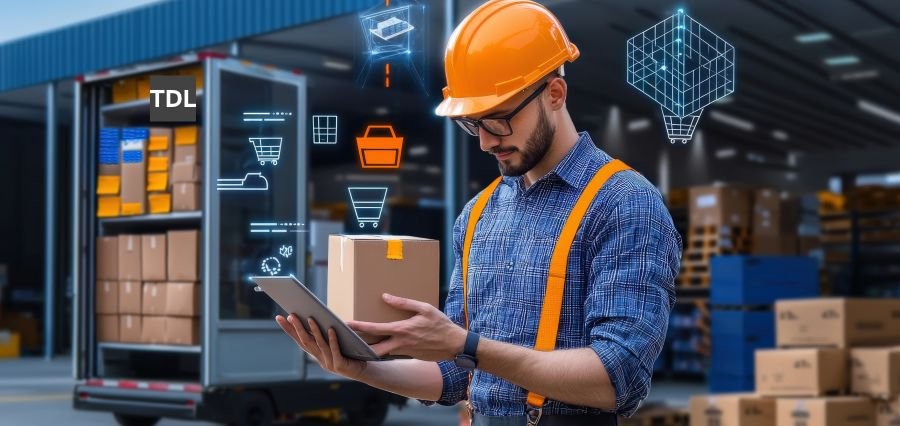Procurement is now one of the most dynamic and strategic corporate functions of our times. Earlier, it was a transaction function, with price negotiation and contract management, while now it has been developed as a value generator for business, an efficiency driver, and an agent of business resilience. International economic volatility, supply chain interruption, and shifting stakeholder expectations have prompted business organizations to rethink how they buy, manage, and source goods and services. The future belongs to those who are ahead of the curve. Organizations are investing in digital technology and processes that reimagine procurement as a cutting-edge, technology-enabled function. It is no longer a choice to get into procurement technology. Firms are being pushed more and more to push supply chain transparency, cut costs, fulfill regulation mandates, and reach sustainability goals. Procurement software enables it all via the infrastructure. Be it cloud platforms or AI, digital technologies are creating firms as more strategic, quicker, and better-informed decision-makers.
AI and Procurement Automation
Automation has emerged to the forefront as the cornerstone of modern procurement models. By automating repetitive tasks such as creation of purchase orders, verification of invoices, and new supplier implementation, organizations are able to substantially remove errors and wastage of time involved with manual steps. Automated processes improve cycle times, precision, and adherence to company policy. Automating high-volume procurement activity-based organizations of multicomplex environments delivers the scalability and consistency needed to effectively function in multicomplex environments. Subsequent improvement in efficiency enables procurement professionals to concentrate more on value-added activities such as strategic sourcing, supplier innovation, and market analysis.
AI-powered applications can review massive amounts of supplier and marketplace data, producing insights beyond the scope of reporting. For instance, AI can forecast changes in price, identify potential threats within the suppliers and recommend best procurement practices. The more machine learning models one trains, the better they will work, and the recommendations will improve and improve over a period of time. Moreover, natural language processing enables unstructured data such as vendor slang or regulatory documents to be processed, supporting better decisions. Combined, automation and artificial intelligence are transforming procurement from a reactive profession to a predictive and proactive profession.
Cloud Platforms and Data-Driven Decisions
Implementation of cloud-based procurement platforms has also become a shared trend of digitalization. These sites consolidate all the procurement processes in a single and the same web platform and make easy execution of contracts, suppliers, and expenses across different regions of the world. For multinational corporations, the acquisition of information everywhere on the earth means coherence and coordination of the geographically scattered staff. Cloud platforms also combine enterprise resource planning packages and other enterprise software in a manner that suggests an end-to-end setup for scalability and flexibility. It is also necessary to leverage the utilization of data analytics to create improved procurement strategies.
With procurement data brought into a single, integrated system, organizations gain real-time visibility into supplier performance, compliance, and buying behaviors. More robust dashboards in reports allow decision-makers and planners to identify inefficiencies, renegotiate contracts, and track progress toward strategic goals. This transition to data-driven procurement allows companies to break free from problem-solving to planning ahead. Hence, companies are best suited to match purchasing decisions with business goals such as cost reduction, risk management, and sustainability.
Sustainability and Supplier Risk
Sustainability is no longer an organizational aspiration but a procurement requirement. Customers, regulators, and stakeholders increasingly expect higher levels of responsibility in the way companies engage in purchasing their products and services. Procurement professionals are also now tasked with ensuring suppliers are meeting environmental and social responsibility standards, whether greenhouse gas emissions, waste minimization, or labor practices. Technology enables firms to gauge and compare suppliers on these, either electronically on scorecards or using risk monitoring software. Technology enables firms to comply with regulations but also creates improved images with customers increasingly looking for sustainable supply chains. Supplier partnership and risk management are also fueling procurement innovation.
Sophisticated technologies for supplier relationship management are the foundation for real-time collaborative planning, performance tracking, and co-planning. They enable transparency and trust, wherein companies and suppliers work together on a bid to innovate and address problems. Meanwhile, risk management software provides businesses with the opportunity to track the geopolitical situation, economic context, and compliance risk in real-time. By incorporating risk assessment into procurement operations, companies can anticipate disruptions beforehand, make supply chains secure, and maintain continuity of business.
Conclusion
Procurement is changing with technology. Automation, artificial intelligence, cloud platforms, and green solutions stay no longer nice-to-have but rather tend to become a component of the procurement ingredients of success. These technologies are helping companies automate, improve transparency, and make more informed decisions in favor of quick productivity gains and future-proof strategy. Companies embracing these three top procurement trends will be in the best position to navigate uncertainty worldwide and shifting market dynamics. They will also empower supplier relationships, compliance, and sustainable, flexible supply chains. The future of purchasing is how responsibility can be united with efficiency, and the technology is the vehicle that will unlock it. The firms that are able to envision procurement as a strategically aligned, technologically enabled function will be well on their way to achieving success in an increasingly globalized and technologically advanced world economy.
Read Also: Talal Ali Mohamed: Redefining Healthcare Procurement while Building Trust and Driving Innovation




